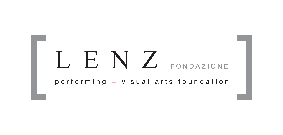
Landscape Morphologies
Performative Rehydrations of the Urban Present
Lenz imagines and realises new cartographies in the fruition of the network of Museums and Collections of the University of Parma, through innovative artistic and theatrical experiences under the dual aspect of visual and installation.
After the experiences of scenic and performative revisitation in monumental complexes of the highest historical-artistic value, such as the Reggia di Colorno, the Pilotta, the Museo Archeologico di Parma, the Rocca di San Secondo, the ex Ospedale Vecchio, the Museo Guatelli, the Tempio di Valera, the ex Carcere di San Francesco the Ducal Palace, the Abbey of Valserena, and after the appreciation by IBC – the Institute for Artistic, Cultural and Natural Heritage of the Emilia-Romagna Region – of the Opera sull’Opera Project, Lenz Fondazione continues to generate an aesthetic reactivation of the historical heritage through contemporary artistic signs.
In our aesthetic and ethical vision, artistic rehydration is capable of acting as a process of ‘restoration’ of buildings and the works they contain – exhibited and guarded like treasures in the University buildings. In recounting the history of knowledge and research, these assets represent an enormous cultural and scientific heritage at the disposal of the university and local community, a priceless multidimensional encyclopaedia to be known, used and discovered – also through new forms of immersive fruition, which transfigure the place with the imaginative power of art, making it possible to regenerate the Past in an Imminent Present – quoting the title of the great Project of Lenz Fondazione for Parma Italian Capital of Culture 2020+21.
After a phase of preliminary studies, in 2023 the project enters the heart of a composite programme – ranging from live performances to video installations, from seminars to meetings with students, from artistic residencies to streamed works – and branched out, as it will take place in different locations: from the University’s main campus with the Bottego Museum and the Aula dei Filosofi, to the Campus area, with the large Palaeontology Museum.

NOW
Museum from the ancient Greek mouseion, the place sacred to the Muses, the daughters of Zeus, protectors of the arts and sciences and Mnemosyne, the goddess of memory. In the first museum, the Alexandria Museum of Ptolemy I, there was already scientific and literary research, there was the universal library of Alexandria where philology, the search for words and style, was born. The etymology of the word University derives from the Latin universitas, complex of all things, which, in turn, derives from the adjective universus, whole. Like the world.
Today, of objects, architecture, works of art and ancient artefacts, the history of peoples, the tools of science and technology, fossils and minerals, networks must be traced, synapses of past, present and future to be imagined. Connections must be drawn between encyclopaedias of knowledge, without necessarily a linear direction; the historical time of a time and place may be millennia ahead of a temporal elsewhere on planet earth, the oldest civilisations may have already inhabited the future, and our present may have already inhabited the past. It usually happens when a happy future is not in sight, when apocalyptic horizons are glimpsed where no single human being, animal, or plant would have time to look at itself and reveal itself, reveal itself before a God or Nature. The past alerts us. Then museums, universities could rebuild – virtuously, as an ovidian metamorphic cyclical virtue – a golden, silver and bronze age of the present, to reconsider themselves citizens of a single planet of the iron race, to avert the end of mankind, to save everyone’s world. If museums preserve things, the future will preserve more and more images, numbers, geometry, magic. Memory will become more and more like an enormous brain of memories, things will lose their materiality and only words will remain of them, the silent voice, they will speak only the language of poetry, as in Pier Luigi Bacchini and Francis Ponge, two poets who gave voice to things. Museums and Universities, by their very raison d’être, have the task of preserving these clusters of atoms so that everything, be it painting or stone or artefact, in every single scientific or artistic field, can be a stimulus to the subjective, cognitive, aesthetic and thought experience of every living spectator. Traces of planetary memory, NOW. Our Project Morphologies of Landscape. Performative Rehydrations of the Urban Present pushes us to reflect on that NOW, on the dynamic reading of the findings of science, art, botany, human thought through performative actions that inhabit contemporaneity, that bring the original poetic function back to the centre of the MUSEUM site. The regeneration of the past in an Imminent Present means restoration work and new life for every preserved good, a new imaginary habitat in which everything can represent itself, through the languages of contemporary art, in its essentiality together with its intrinsic aesthetic and historical value.








